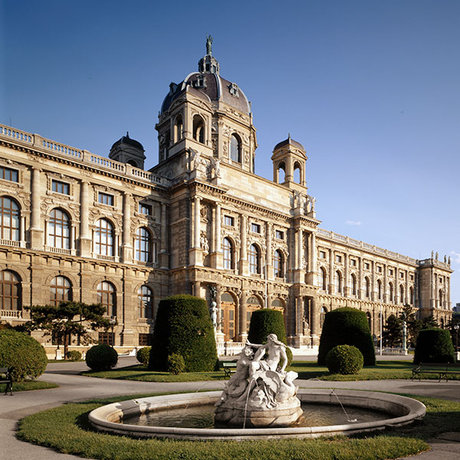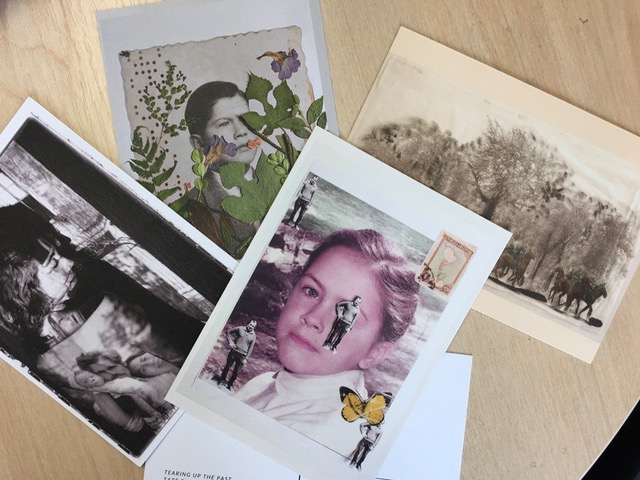It’s been a longish gap since my last blogpost – somehow I always imagine the end of term as a time of graceful winding down and time for review and reflection, and it ends up being a mad dash for the finish line.
Anyway, now term is over I can draw a breath and let you know about various exciting and interesting things.
The destination for our 2020 department study trip has been announced: the glorious and fascinating Central European metropole of Vienna. The trip will take place 30 March to 3 April. More will be sent out to current students at all levels in the new year about how to secure your place on the trip, and about a session being scheduled to meet the trip leaders and ask questions. I can tell you now a bit about the two people leading the trip. Niccola Shearman has just completed a one-year lectureship in the history of art department at University of Manchester, where she led a very successful field trip to Vienna for them. She is an expert in German Expressionist art; after a career as a teacher, she recently completed her PhD at the Courtauld. Miloš Kosec is an architect based in Llubljiana, Slovenia, who recently completed his PhD in contemporary architecture at Birkbeck, and who knows Vienna – both contemporary and historical – well. They’re in the process of devising a really interesting and rich trip. The departmental study trip, which is free for current students, is generously supported by the Murray Bequest, which, in addition to paying the co-leaders, funds bursaries for help those students who need it to defray the travel and accommodation costs. More on that soon! You can read more about the departmental study trip here.
And speaking of Central European metropoles, our Certificate programme in History of Art features a brilliant week-long study trip to Budapest, 11-15 May, led by Kasia Murawska-Muthesius. Kasia (ably assisted by Prof Stefan Muthesius) has led numerous excellent and extremely popular field trips to cities all over Europe, but this is the first one to Budapest. There are just a couple of places left. Like all our Certificate modules, the Budapest trip can be enrolled on as a one-off module with no entrance requirements. For more on cost and enrolment see here and download more details here.
A message for MA alumni: The deadline for signing up to take MA options in the Spring term on a non-credit-bearing basis has been extended to 6 January. There is the usual fascinating range of options available. Download further details here.
And for those of you considering applying for a MA, PG Certificate or PG Diploma in the department, there are now two Youtube videos of about 20 minutes each outlining details of the programmes’ structure, special features, student experience and more. You’ll hear Leslie Topp (yours truly) and Sarah Thomas explaining the programmes with slides, and then an online Q&A session with more information. (The beginning of my video has a techno-dystopian vibe as you’ll see, but stick with it and it settles down quite reassuringly.)
Links to the videos:
History of Art, History of Architecture, History of Photograpy programmes (Leslie)
Museum Cultures Programmes (Sarah)
Mara Polgovsky-Ezcurra, Lecturer in Contemporary Art, was in Liverpool last week leading a hands-on workshop at Tate Liverpool engaging with the links between collage and activism. ‘Art and Politics: The Workings of Collage‘ asked: What is the relevance of art to discuss power and its abuses, the relationship between beauty and Empire, the ways the past affects our vision of the present? It addressed these questions through precipitative and creative engagement with the work of Argentine artist and human rights activist Leon Ferrari (1920-2013). Ferrari gained international visibility for his unparalleled capacity to stir up debate and explore ways to make art relevant to society at large. He practiced drawing and sculpture, yet collage became the primary form of expression that he used to approach art and politics. The workshop aimed not just to come to know and understand Ferrari’s art but also to link it to issues of the present. Participants made a collage meant to be not just artistically pleasing but politically significant too.
Looking forward to next term, Mara has organised an event with the Centre for Museum Cultures that will be of interest to all with an interest in contemporary and performance art, as well as Museum Cultures and BA History of Art with Curating students. ‘Time-based media in the museum: conserving and activating performance’ brings together the academic and curator Bergit Arends (University of Bristol) with the Conservation Manager for Time Based Media Conservation at Tate, Louise Lawson. They’ll be discussing the challenges and opportunities of archiving, conserving and activating works that exist primarily in time.
Finally, a sneak preview of the Spring and Summer programme of Murray Seminars in Medieval and Renaissance Art. All talks are in Keynes library at 5pm:
27th January: James Hall on Michelangelo and Flemish aesthetics
25th February: Federico Botano on a 15thC Florentine manuscripts
16th March: Sarah Ferrari on an Italian Renaissance subject tbc
14th May Lucy Donkin on a medieval subject tbc
10th June Clare Vernon on a crusader mausoleum
9th July Gaby Neher on Leonardo da Vinci and cats
Happy Holidays! Back in 2020.
. . Category: Uncategorized



